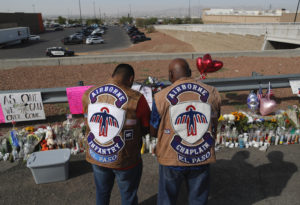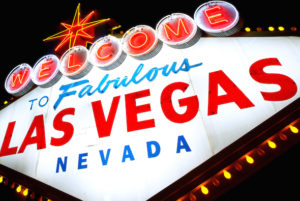How Should Journalists Report on the #MeToo Movement?
We have an obligation to listen—then report with nuance, attention and scrutiny. Hundreds turn out against sexual assault and harassment at the #MeToo March in Los Angeles on Nov. 12, 2017. (Damian Dovarganes / AP)
Hundreds turn out against sexual assault and harassment at the #MeToo March in Los Angeles on Nov. 12, 2017. (Damian Dovarganes / AP)
#MeToo presents a unique challenge for journalism. As the movement continues to reveal widespread experiences of sexual harassment and assault among women, questions must be raised about how journalists (reporters, writers and editors) ought to handle these now-common stories—which often have been hidden in plain sight.
At a recent Truthdig editorial meeting, we thought about our own coverage of #MeToo. How can we best meet our journalistic responsibility while reporting on the movement? It’s one thing to report on the immense significance of #MeToo and another to hold sexual assault allegations to the same journalistic standards as in any other story.
These concerns are intensified when the journalist is confronted with the use of the #MeToo movement as a political tool. Take the failed sting operation conducted by Project Veritas against The Washington Post. In the wake of the sexual misconduct accusations against U.S. senatorial candidate Roy Moore of Alabama, the conservative group attempted to embarrass and discredit the newspaper by luring it into reporting an allegation that quickly would be shown to be false.
Last week, The New York Times reported on the rising “weaponization” of the #MeToo movement by partisan groups and how such actions could threaten the perceived integrity of accusers:
“There is a danger in this environment that unsophisticated individuals who have been abused by powerful people could be exploited by groups seeking partisan advantage, or by lawyers seeking a moment in the limelight,” said Debra Katz, a Washington lawyer who has brought sexual harassment cases against politicians from both parties. …
And a nonprofit group founded by the Democratic activist David Brock, which people familiar with the arrangements say secretly spent $200,000 on an unsuccessful effort to bring forward accusations of sexual misconduct against Mr. Trump before Election Day, is considering creating a fund to encourage victims to bring forward similar claims against Republican politicians. [Truthdig editor’s note: David Brock, when he was a conservative, viciously attacked Anita Hill in his book “The Real Anita Hill” over her accusing of now-Justice Clarence Thomas of sexual harassment when she testified at a 1991 hearing on his appointment to the U.S. Supreme Court. Years later, Brock disavowed the premise of the book when he wrote he had lied in a magazine article to protect Thomas’ reputation. The New York Times, in reporting the disclosure, published an article headlined “Book Author Says He Lied in His Attacks on Anita Hill in Bid to Aid Justice Thomas.”]
Activists on the right are also involved. In November, the Trump-backing social media agitator Mike Cernovich offered to pay $10,000 for details of any congressional sexual harassment settlements, and said on Twitter that he would cover the expenses of “any VICTIM of a Congressman who wants to come forward to tell her story.” Shortly before posting that offer, a source provided Mr. Cernovich with a copy of a sexual harassment settlement that led in December to the resignation of Representative John Conyers Jr., Democrat of Michigan, until then the longest-serving member of the House.
And Mr. [Jack] Burkman [a Republican lawyer], who has suggested that Russian hit men killed a young Democratic National Committee aide [Seth Rich] during the 2016 election, emerged in October to offer his services to women accusing Mr. [Harvey] Weinstein of sexual misconduct. He had never handled a sexual harassment matter before.
Those encouraging the harassment claims say they wish to give a voice to victims who are frequently silenced or bought off with settlement money, but legal actions can undermine a victim’s story—especially amid suggestions from Republicans Donald Trump and Roy Moore that their accusers are being paid by Democrats. While it is difficult to ascertain what role settlements or incentivization payments might play in allegations, political incentivization is worthy of close scrutiny by journalists.
We are witnessing a cultural paradigm shift in real time. Now, a woman disclosing an allegation of sexual harassment, or worse, can hope to be believed, partly because of the sheer numbers of men in power being outed. But this has not always been the case. Dylan Farrow—the adopted daughter of Mia Farrow and Woody Allen—for years has very publicly accused the movie director of sexually abusing her starting in 1992 when she was 7 years ago. Last month she wrote an op-ed for the Los Angeles Times on the disparity between her experience and the experiences of those who came forth with allegations against Harvey Weinstein:
For decades, Allen has used the same defense-through-intimidation techniques that Weinstein allegedly did. In 1997, Connecticut Magazine reported that Allen’s legal team had hired private investigators, including ones assigned to find damaging information on law enforcement officials working the sex-abuse case. As my brother Ronan Farrow documented in the Hollywood Reporter last year, Allen’s public relations team, led by Leslee Dart of the firm 42 West, jumps into action whenever allegations resurface. In retaliation for Ronan’s story, Dart barred the publication from a lunch event related to Allen’s feature at the Cannes Film Festival. …
It isn’t just power that allows men accused of sexual abuse to keep their careers and their secrets. It is also our collective choice to see simple situations as complicated and obvious conclusions as a matter of “who can say?” The system worked for Harvey Weinstein for decades. It works for Woody Allen still.
Indeed, many actresses who have condemned Weinstein’s actions have refused to do the same with Allen (who denies Dylan Farrow’s allegations) and continue to work with him. Dylan Farrow acknowledged this point in her op-ed. Regarding Weinstein, actress Kate Winslet said, “The fact that these women are starting to speak out about the gross misconduct of one of our most important and well-regarded film producers is incredibly brave and has been deeply shocking to hear.” But when asked to speak about working with Woody Allen in “Wonder Wheel,” a movie that is generating Oscar buzz and could earn the actress an Academy Award nomination, Winslet said, “I didn’t know Woody and I don’t know anything about that family. As the actor in the film, you just have to step away and say, I don’t know anything, really, and whether any of it is true or false. Having thought it all through, you put it to one side and just work with the person. Woody Allen is an incredible director.”
Dylan Farrow is addressing an important point about the contradiction of reactions to abuse allegations. Some people may be hesitant to speak out against those who might benefit them or their careers. Complicity, witting or unwitting, is what allows abuse to continue.
“Weinstein’s Complicity Machine,” an excellent piece in The New York Times, demonstrates the web of complicity that allowed Weinstein’s abuse to continue—agents who ignored complaints, lawyers and staffers who arranged for nondisclosure agreements, and actors and actresses who kept quiet out of concern for their careers.
Journalists are not spared from this complicity. A network of reporters helped Weinstein keep his reputation intact, including A.J. Benza, a former New York Daily News gossip columnist, with whom Weinstein exploited “a longstanding system of favor-trading between the press and the movie business” in order to divert attention away from Weinstein’s extramartial affairs. “Gossip writers need a stream of insider scoops,” the Times explains, “industry beat reporters need exclusives on the next big deal and glossy magazines need celebrities who can drive newsstand sales. Mr. Weinstein, who wanted glowing coverage, could provide that and more.”
The expose also revealed that the Hillary Clinton presidential campaign, which received ample support from Weinstein, was given warning from prominent women that Weinstein was abusing women. The New York Times continues:
In 2016, Lena Dunham, the writer and actress, said she was troubled by the producer’s visible presence during Mrs. Clinton’s presidential run, hosting fund-raisers and appearing at campaign events. She had heard stories, both directly and secondhand from other actresses, about disturbing encounters with him, she said. So in March last year, Ms. Dunham, a vocal Clinton supporter, said she warned the campaign.
“I just want you to let you know that Harvey’s a rapist and this is going to come out at some point,” Ms. Dunham said she told Kristina Schake, the campaign’s deputy communications director. She recalled adding, “I think it’s a really bad idea for him to host fund-raisers and be involved because it’s an open secret in Hollywood that he has a problem with sexual assault.”
Earlier, during the 2008 presidential race, Tina Brown, the magazine editor, said she cautioned a member of Mrs. Clinton’s inner circle about him. “I was hearing that Harvey’s sleaziness with women had escalated since I left Talk in 2002 and she was unwise to be so closely associated with him,” Ms. Brown said in an email.
According to the Times, representatives from the Clinton campaign denied that Dunham mentioned rape.
Would warnings of this sort be useful to journalists, given the lack of firsthand sources or hard evidence?
The question raises another oft-cited concern about the #MeToo movement: that accusers can make allegations without providing ample evidence of abuse, or that false allegations will be made.
However, evidence of harassment is often abstract and difficult to prove. Rape kits often remain untested in police and crime labs, and without a recording or text exchange, harassment can be difficult to document. Though journalists have a responsibility to probe the political incentivizing of allegations, at what point does the investigation become victim blaming?
It also is worth noting that false accusations from individual women are quite rare. Truthdig Assistant Editor Natasha Hakimi Zapata writes:
According to a report published by the National Sexual Violence Resource Center, while for the most part, research on false reporting of sexual assaults is “unreliable because of inconsistencies with definitions and methods employed to evaluate data,” false allegations make up only about 2 percent to 10 percent of cases. Not to mention that many cases go unreported for reasons including victim shaming and the psychological damage caused by assault.
Thus, many journalists and writers are more concerned about the systemic silencing of women than about the potential of an occasional false accusation. Their sympathy is not with the abusers who lose their careers, but for the women who are kept out of professional advancement in the first place. As American writer Rebecca Solnit writes:
[W]e should not mourn the end of the creative lives of the men being outed as predators; we should contemplate the creative contributions we never had, will never know, because their creators were crushed or shut out. When [Donald] Trump was elected we were told not to normalize authoritarianism and lies, but the losses due to misogyny and racism have been normalized forever. The task has been to de-normalize them and break the silence they impose. To make a society in which everyone’s story gets told.
The fight against foundational misogyny is long overdue, but how do we avoid telling, sharing or amplifying false #MeToo stories?
Another challenge of the #MeToo moment is false equivalence. We must not equate harassment to more serious assault or rape, while still acknowledging each as part of the same spectrum of misogynist behavior. While reading the New York Times report on former New York City Ballet director Peter Martins’ longtime alleged abuse, I questioned the way some of the charges were reported. I grew up in the often ruthless world of ballet, and while it is clear that Martins abused his power and may have sexually assaulted some of the NYCB dancers, allegations like weight monitoring or “body-shaming” struck me as a completely normal (though perhaps problematic) part of being a dancer. Placing these stories alongside much more brutal allegations poses the risk of dilution.
On the other hand, perhaps the normalization of extreme bodily demands, and the hesitance to classify them as abuse, speaks to a more pervasive ill in ballet. Martins is far from the only artistic director who has pushed his dancers to unhealthy extremes. Today, this behavior is unacceptable, and from the perspective of many company members, it always has been the same as assault or abuse. Former NYCB principal dancer Wendy Whelan, who danced under Martins’ leadership, said it best: “The tradition of balletic patriarchy has held a closet full of skeletons. In recent light of things, many artists and dancers are seeing that society is no longer accepting these kinds of behaviors as normal, so why do we?”
Some journalists are more dismissive of the movement as a whole, attributing it to a culture of “victimhood.” The New York Times ran another op-ed this week that was prompted an outcry from feminist internet commentators:
What happened to women’s agency? That’s what I find myself wondering as I hear story after story of adult women who helplessly acquiesce to sexual demands. I find it especially curious given that a majority of women I know have been in situations in which men have come on to them—at work or otherwise. They have routinely said, “I’m not interested” or “Get your hands off me right now.” And they’ve taken the risk that comes with it.
The backlash to the piece is unsurprising. Why must being a woman inherently entail risk, sexually or professionally? The writer unwittingly concedes the importance of the #MeToo movement by acknowledging that women who reject sexual advances do so at the potential expense of their safety or careers. How can women have the agency she speaks of while they are subjected to the demands of men as means of professional advancement?
The questions of whom to believe, how to believe or when to believe women are not new—and they are part of why it has been historically difficult to come forward after assault or harassment. A piece at Literary Hub by writer Emily Van Duyne titled “Why Are We So Unwilling to Take Sylvia Plath at Her Word?” brought to mind a perfect historical example. After The Guardian published a story revealing unpublished letters from the poet Sylvia Plath to her former therapist alleging that she was physically abused by her husband, poet Ted Hughes, there was an outpouring of disbelief from the Hughes estate and many who loved his work. Van Duyne, who is working on a book about Plath, wrote in her piece, “To anyone as familiar as I am with Plath’s life and work, the fact that Ted Hughes was likely abusive—emotionally and physically—is not news. In fact, the only way we can discount the certainty of that abuse is if we choose to disbelieve Plath at her repeated word in her journals, reports to friends and family, and now, it seems, letters to Dr. Ruth Barnhouse, Plath’s therapist-turned-confidant.”
After reading the piece, I returned to Plath’s journals, which were beloved to me as a child. Indeed, many passages were marked with omissions at points where she began to write unfavorably about Hughes, who edited the journals before publishing them after her death. I wondered how differently things might have turned out for Plath, who took her own life at age 30, if she had been living during something like the #MeToo movement.
Women like Plath, Farrow and countless others have been telling their stories all along. Our culture is finally listening. As journalists, we have an obligation to listen—then report with nuance, attention and scrutiny.
Your support matters…Independent journalism is under threat and overshadowed by heavily funded mainstream media.
You can help level the playing field. Become a member.
Your tax-deductible contribution keeps us digging beneath the headlines to give you thought-provoking, investigative reporting and analysis that unearths what's really happening- without compromise.
Give today to support our courageous, independent journalists.






You need to be a supporter to comment.
There are currently no responses to this article.
Be the first to respond.